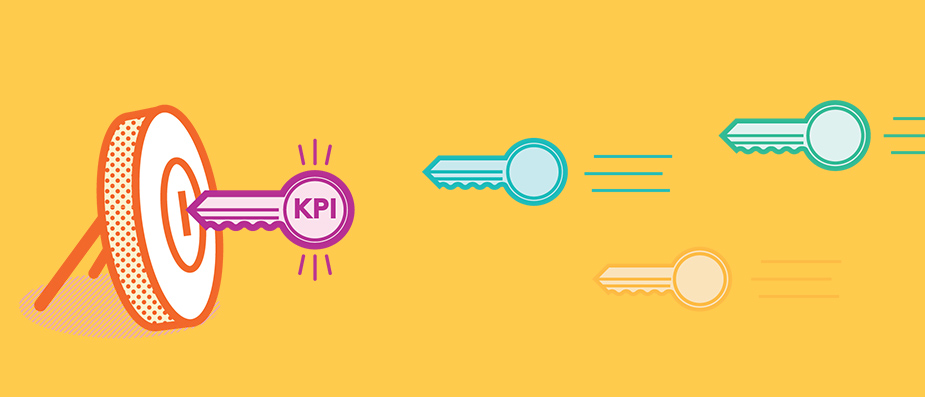To put it simply, KPIs or key performance indicatorsare measurable variables by which we can measure an organization’s success in achieving defined key goals. In the beginning, every business –including developing software projects– identifies important and critical indicators of its success. These indicators are the ones that are monitored at each period to determine how close you are to the goals.
The point to note is that the key performance indicator (KPI) is different from the key result indicator (KRI). The first one measures your performance in your business field, while in the second one, you are looking to measure the results.

Three types of key performance indicators for software projects:
- Inputs indicator: Inputs actually gives you an idea of how much of what kind of resource has been used to achieve what goals. These include the time you have spent, the costs, and the resources you have used to develop a software project.
- Process indicator: In this section, you examine the quality of executive processes. One of the most critical performance indicators for software projects is customer support tickets. How many tickets have been recorded, tracked, and archived over a while will help you monitor your performance.
- Outputs indicator: One of the most popular KPIs is the one that is related to outputs. The number of new users and the ads you accepted are among these.
We need to see how much work we have done to achieve the outputs.
How to define KPI for your business?
Sometimes, the key performance indicators are so numerous that you get confused about choosing the correct one for your software project. If you choose the wrong performance indicator, you actually measure something that is not in line with your company’s strategic goals. It’s like choosing a 20cm ruler (!) to determine the depth of the sea, which we will certainly never get.
The first step is pinpointing, which KPIs are right for you based on what you are looking for. For solving this, you should answer the following questions.
- What results am I looking for? These results can include revenue, more software sales, more clicks, more followers, etc.
- What do these results mean to me? You need to figure out why it is vital to achieving these results.
- What should I measure to track the progress path? You must specify the evaluation methods, the quantity or quality of information and statistics, the method of analysis, analytical tools, and so on.
- How do I achieve these results? You need to see which campaigns and advertising tools help you the most.
- Who is responsible for achieving these results? You should determine which person, individuals, or departments are responsible for completing the desired goals and outcomes.
- How do I know that I have achieved the desired results? You need to define specific criteria from the beginning to measure the standards to see if you have reached the desired results.
- What is the time frame for measuring the outcomes?

Difference between Key performance indicator (KPI) and Key outcome indicator (KRI)
KPI is an indicator for measuring performance and has nothing to do with the result! This means that results such as “Revenue growth” and “profit” can not be considered KPIs. Why?
The answer is simple; every result we get is the outcome of doing several different activities; Not just a specific one.
Therefore, we call items such as revenue the key result indicator or KRI; In fact, a KRI tells you what you have achieved in your business; But the KPI tells you what to do.
The point here is that each KPI should follow only one critical function and not include other ones. For example, suppose you choose “profit increase” as your KRI. In that case, it is related to several different activities, such as increasing viewers-to-customer rates, the ratio of old software futures to new ones, recent software project development, and more.
8 Tips to Keep in Mind When Designing a KPI
- Key indicators should be designed based on quantities that change under the influence of customer behavior; this way, you can examine the implementation effects of your strategies and see how customers have responded to your performance.
- Design your KPI based on your organization’s goals, not your ideas.
- KPIs should be derived from the organization’s strategies and focus on progress.
- It should be easy to understand.
- Each key indicator must be related to a clear goal.
- Move slowly and steadily. Be careful about what you measure.
- Have a detailed and regular monthly schedule for receiving feedback.
- The KPI should reflect the “business processes” in your organization; this means that both the organization and the customers must be involved in defining the measurements.

